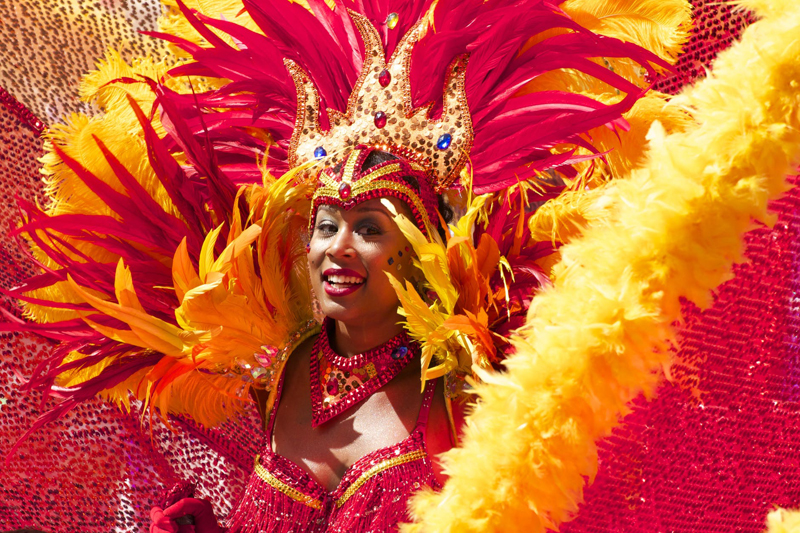Days of the Dead (Los Días de los Muertos)

Días de los Muertos, or the feast Days of the Dead is one of Mexico’s most important annual observances. The ritual dates back 3000 years to their Aztec forebears. The Aztecs believed that the god Quetzalcoatl created the human race by pouring his blood over the ashes and bones of his ancestors. In the pre-Columbian era, what is now Días de los Muertos was celebrated in the ninth month of the Aztec calendar, around the beginning of August and lasted the entire month. In conjunction with the time of harvest, this festival was dedicated to the Aztec goddess The Lady of the Dead.
In Spain, All Saints Day is celebrated on November 1, when Catholics honor all the known and unknown saints. On November 2, the Spanish observe the fervent feast of All Souls Day to commemorate all the deceased who reside in Purgatory while being cleansed of their sins through atonement. When the Aztec and Spanish cultures collided, over time their cultural traditions melded into the fiestas that we know today as Días de los Muertos.
The two days of the dead are the first two days of November when family members clean and decorate the graves of loved ones with altars and ofrendas Some of the offerings are bright orange marigolds, food, drinks, candles, photographs and personal keepsakes. The food offerings include pán de muertos, an elaborately braided bread and spun sugar mariachi musicians. The most prevalent symbols of the days of the dead are calacas skeletons and calaveras skulls. They make calaveras de azucar, sugar skulls, used to decorate the altars erected to commemorate the dead and are eaten by the children. Calaveras literarias are poems written for los días de los muertos that are meant to humorously mock the living.
November 1 is Dia de los Angelitos, Day of the Little Angels when deceased children are remembered and honored. The death of a child is always heart-wrenching but it is not considered a catastrophe because the family now has a little angel, who is their natural intermediary with God. The children’s graves are decorated with white orchids or baby’s breath. Offerings or ofrendas for the little ones include milk, candy, cookies and toys.
The second día de los muertos on November 2, is to honor the adults who died. The belief is that death is a continuum of life from birth, childhood, adolescence to full adult contributors to the community and that the dead must never be forgotten. So it is a very happy fiesta. Families are confident that their dead would be insulted by grief and mourning. Días de los Muertos is an occasion to celebrate with family and friends remembering the deceased with humorous stories, food, drink, parties, and activities the dead enjoyed in life. During Días de los Muertos, Mexicans believe the dead awaken from their sleep to enjoy the fiestas and remembrances with their loved ones.
In Spain, All Saints Day is celebrated on November 1, when Catholics honor all the known and unknown saints. On November 2, the Spanish observe the fervent feast of All Souls Day to commemorate all the deceased who reside in Purgatory while being cleansed of their sins through atonement. When the Aztec and Spanish cultures collided, over time their cultural traditions melded into the fiestas that we know today as Días de los Muertos.
The two days of the dead are the first two days of November when family members clean and decorate the graves of loved ones with altars and ofrendas Some of the offerings are bright orange marigolds, food, drinks, candles, photographs and personal keepsakes. The food offerings include pán de muertos, an elaborately braided bread and spun sugar mariachi musicians. The most prevalent symbols of the days of the dead are calacas skeletons and calaveras skulls. They make calaveras de azucar, sugar skulls, used to decorate the altars erected to commemorate the dead and are eaten by the children. Calaveras literarias are poems written for los días de los muertos that are meant to humorously mock the living.
November 1 is Dia de los Angelitos, Day of the Little Angels when deceased children are remembered and honored. The death of a child is always heart-wrenching but it is not considered a catastrophe because the family now has a little angel, who is their natural intermediary with God. The children’s graves are decorated with white orchids or baby’s breath. Offerings or ofrendas for the little ones include milk, candy, cookies and toys.
The second día de los muertos on November 2, is to honor the adults who died. The belief is that death is a continuum of life from birth, childhood, adolescence to full adult contributors to the community and that the dead must never be forgotten. So it is a very happy fiesta. Families are confident that their dead would be insulted by grief and mourning. Días de los Muertos is an occasion to celebrate with family and friends remembering the deceased with humorous stories, food, drink, parties, and activities the dead enjoyed in life. During Días de los Muertos, Mexicans believe the dead awaken from their sleep to enjoy the fiestas and remembrances with their loved ones.

Related Articles
Editor's Picks Articles
Top Ten Articles
Previous Features
Site Map
Content copyright © 2023 by Valerie Aguilar. All rights reserved.
This content was written by Valerie Aguilar. If you wish to use this content in any manner, you need written permission. Contact Valerie D. Aguilar for details.


